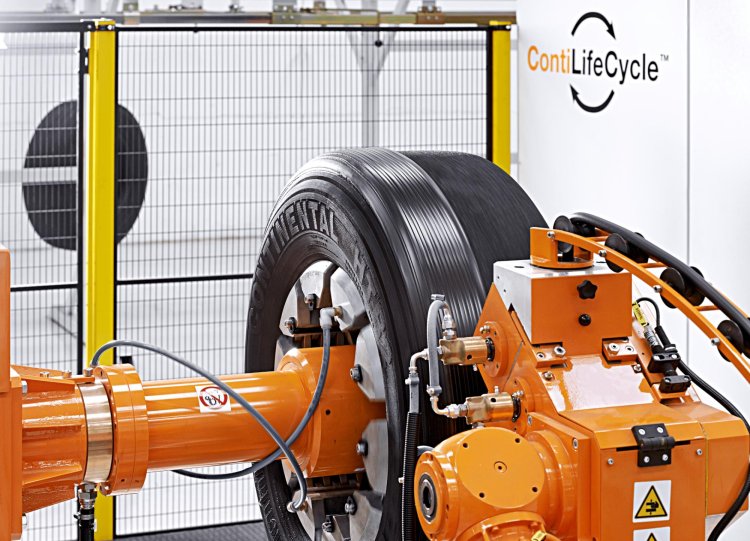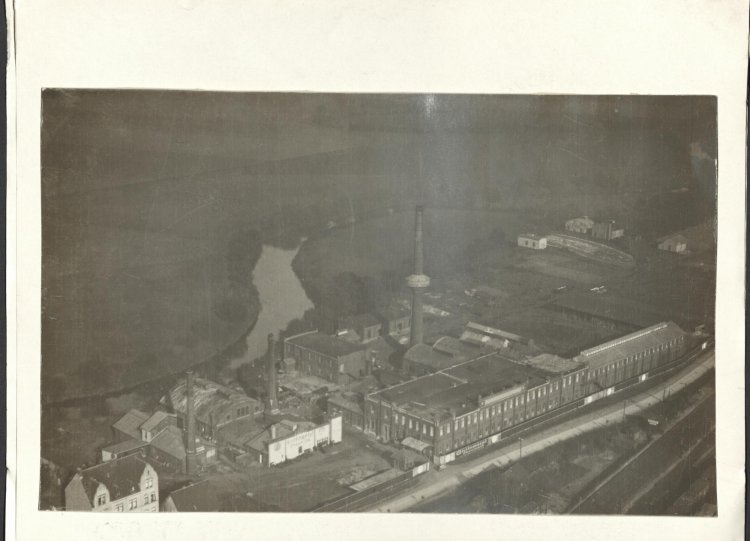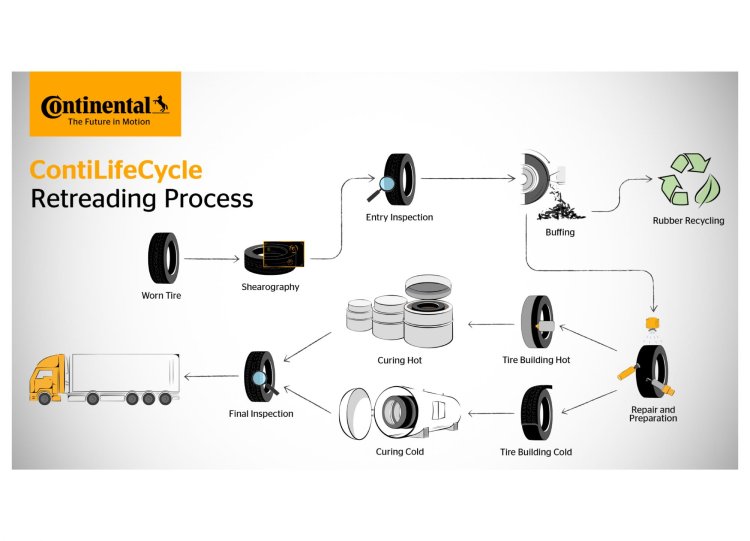Continental has been setting standards for greater sustainability with its retreading of truck tires since 1903. The premium tire manufacturer has been using retreading to extend the service life of tires for more than 120 years – conserving resources and reducing costs.
Continental retreads more than one million truck and bus tires worldwide every year. According to a study by the Fraunhofer Institute for Environmental, Safety and Energy Technology (UMSICHT), retreaded tires reduce CO2 emissions by up to 50 percent compared to new tires. The amount of recycled and renewable materials in retreaded tires can be up to 85 percent. In terms of traction, grip and safety, retreaded tires from Continental are every bit a match for new tires.
Turning old into new: hot and cold retreading
Among other things, tires consist of a casing and tread. However, the casing may still be completely intact, while the tread has reached the end of its service life. Approximately 70 percent of truck and bus tires were considered retreadable in 2022, based on industry reports and studies of tire manufacturing practices.
As part of the retreading process, the remaining tread rubber and, in the case of hot retreading, the sidewall of the tire are buffed and restored. This prepares the casing for a second and third tire life. Continental uses state-of-the-art analysis processes, production methods and recycling technologies in its hot and cold retreading. In hot retreading, the casing is restored from bead to bead in a hot vulcanization process. A new rubber compound is applied to the used casing. At Continental, this process is called ContiRe. In cold retreading, known as ContiTread in Continental’s product range, a profiled and pre-vulcanized tread material is applied to the buffed casing. Cold retreading is carried out at lower temperatures and with pre-vulcanized treads. Generally, around 70 percent of the material from the original tire can be reused in both hot and cold retreading.
From recovering reclaimed rubber to the fully integrated ContiLifeCycle plant
The origins of Continental’s tire retreading activities can be found in Hanover. Tires could already be retreaded at the Continental plant in Hannover-Vahrenwald more than 120 years ago. In 1903, the company also bought a factory building in Seelze in the Hanover region and set up a plant on the site for reclaiming, i.e. processing and recycling old rubber. Even back then, nine to 13 tons of used rubber were processed every day. That is equivalent to the average weight of around eight cars. Continental was already laying the foundations for circular and sustainable business back then.
Continental set another important milestone in the retreading of truck tires in 2013 when it opened the ContiLifeCycle plant in the Stöcken district of Hanover. The distinctive feature of this plant is its combination of a retreading and a recycling plant. With an integrated approach consisting of hot retreading for truck and bus tires as well as a rubber recycling system developed specifically for the ContiLifeCycle plant, the company has been actively promoting the sustainable use of raw materials, water and energy for a decade. Since 2013, around 900,000 truck and bus tires have been given an extended service life through retreading at the plant in Hanover-Stöcken. Since opening ten years ago, around 900,000 truck and bus tires have been given an extended service life through retreading at the plant in Stöcken, Hannover.
Expanding the circular economy
The retreading activities are an example of Continental’s intelligent circular economy solutions. The environment benefits from retreading, as the use of valuable resources such as crude oil, natural rubber and water can be significantly reduced. In addition, retreading helps to save CO2 emissions, as it requires up to 70 percent less energy compared to the production of a new tire. The fact that a large proportion of the casing can be reused contributes to the cost efficiency.
Continental is working tirelessly to advance innovative technologies and sustainable products and services throughout its entire value chain, from sourcing sustainable materials to recycling end-of-life tires. The company also relies on the pyrolysis of used tires. The overall goal is to recover 60 percent of the materials used in tire construction from used tires by 2050 at the latest.













